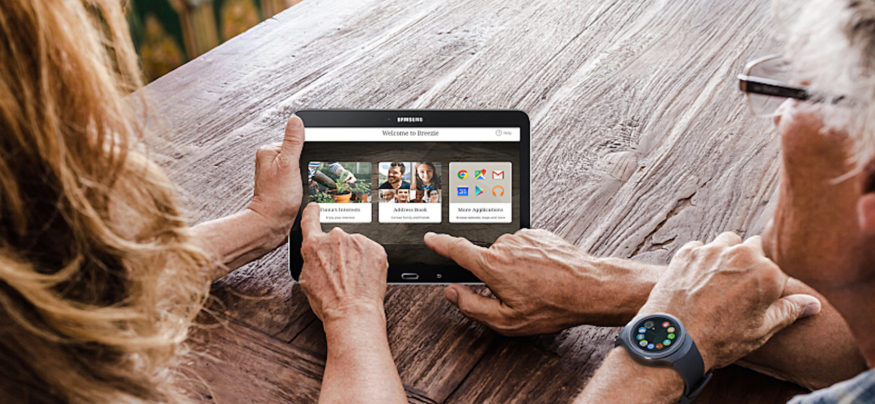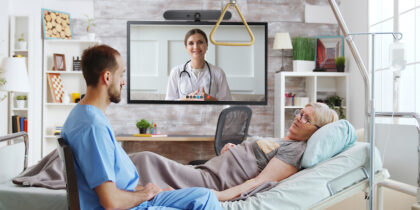One of the most prominent trends I’ve seen in healthcare today is its movement from the hospital to the home. For that reason, we need to rethink our definition of the “smart” home, which goes far beyond automating lamps and maintaining room temperature. It involves the transformation of our physical space into a connected, responsive health hub where health and wellness are optimized in every aspect of our lives. If designed properly, health hubs featuring one or more Internet-connected devices have the ability to drive proactive care and wellness and promote longer, healthier lives.
As part of the IEEE Tech for Humanity Series at SXSW Interactive 2016, I joined a panel of experts from Karten Design, GBBN Architects, and the Motion Picture and Television Fund to discuss what the home of the future will look like.
Transform Care From Reactive to Proactive
We tend to normalize and ignore our health issues, making it difficult to detect the onset of detrimental health events. The good news is that we now have technology that can help us proactively manage care at home — we just need to put the systems and infrastructures in place.
We now have technologies such as the Samsung Gear smartwatch and SmartThings connected home technology that enable the remote monitoring of user health and the home environment, while also offering greater control of household devices to enable a safer and more convenient living situation. The wearable health solution can relay personal biometric data to family, caregivers, and healthcare providers, detect worrisome changes in one’s health and home environment, and alert family and medical professionals of emergency situations. This kind of digital connectivity leads to a sense of security and connectedness and fosters independent living, which is particularly important for the senior population and those with diminished motor and cognitive abilities.
We have already seen success for seniors with a gesture-controlled wearable solution. In a five-month pilot study, 60 residents at the Ohio Masonic Home in Springfield, Ohio were given the Samsung Gear S2 smartwatch, running a software solution from Reemo. Reemo integrates with SmartThings technologies to enable seniors to operate lights, locks, thermostats, and appliances with hand gestures. Findings from the pilot have demonstrated that smartwatch and connected home technologies can be readily adopted by seniors and promote a greater sense of control over their environment. Also, the ability to send an emergency text message with global positioning system (GPS) coordinates by simply pressing a button on the smartwatch is another major benefit. This adds to the sense of security and connectedness that can be gained from the technology.
Digital health technology, smart objects and the Internet of Things (IoT) enable us to not only respond faster in emergency situations, but also monitor other characteristics of wellness — from nutrition to exercise, sleep, medications and even mental and social well-being. With the use of health apps doubling in the past two years from 16 percent in 2014 to 33 percent in 2016, according to Accenture, patients are using technology to actively maintain wellness. Tractica even forecasts that “standalone home health hub shipments will increase to nearly 1.6 million annually by 2020.” The data analytics obtained from these technologies holds great promise for identifying patterns and trends that will shift care from reactive to proactive.
Users Want Seamless Technology
When considering user experience for any digital healthcare product, ease of use can’t be overlooked.
A recent pilot study, conducted by the National Council on Aging (NCOA), provided 225 low-income seniors — many of whom had never used mobile technology before — with training on a Breezie tablet designed to simplify the user experience and enhance care. The study found that seniors using the tablet with the NCOA Digital Mastery Program displayed higher levels of activity and improved social and emotional scores, contributing to an increased quality of life.
The underlying Samsung KNOX platform on the Breezie tablet was a critical component of the success of this project, helping to remove complexity for the user by integrating seamlessly with relevant applications through KNOX Customization. For example, if a senior wanted to video conference with a friend, the senior would first need to launch Skype, find the friend, and then start the video chat. With KNOX Customization and the simplified Breezie interface, the senior can simply find the friend in their contact list, click on the video chat button and the call would be launched.
The Pew Research Center has found that the majority of seniors — approximately 58 percent — have access to the Internet, 18 percent own or use smartphones, and 27 percent use e-readers or tablets. What we also see is that some seniors readily adopt new digital and mobile tools, while others do not. A key factor for adoption is how easy the technology is to use. There are multiple modalities that need to be interconnected to create a seamless experience, and easy integration is a must-have for individuals who have never used technology, or aren’t knowledgeable about the latest gadgets and tools. We realize that technology plays an everyday role in people’s lives, which is why the interoperability of data and devices is a critical factor in enabling the widespread adoption of the smart home. Health hub technology should be seamless, fun and valuable. If you achieve this, then you have created a value proposition that will generate future business models.
Focus on the Home
Health technology now focuses outside of the hospital as patients spend more time at home and on the go. From basic assessments and virtual checkups to chronic disease monitoring and even advanced procedures, home health hubs will empower us to live, age and engage in our health by delivering convenient, proactive care. At Samsung, we are trying to enable the consumer to manage their own health at home and on the go with the support of family, friends, caregivers and healthcare providers. The key to this lies in smart technologies that enhance communication and encourage connectedness.
Bringing automated solutions together can create environments where solutions transcend single devices to create a meaningful impact in people’s lives. Today, there are numerous technologies that solve a single problem. Each technology has its own platform, analytics engine and device integration requirements. What we need is a secure but open broad-based technology platform that connects home-based and mobile technologies and simplifies the user experience. When this happens, our homes will provide better experiences, not just for enhanced convenience but for improved health outcomes. If crafted properly, the health hubs of the future will actively work to help us live happier, healthier and longer lives.
Learn more about how to engage seniors with digital health to enhance their quality of care.







